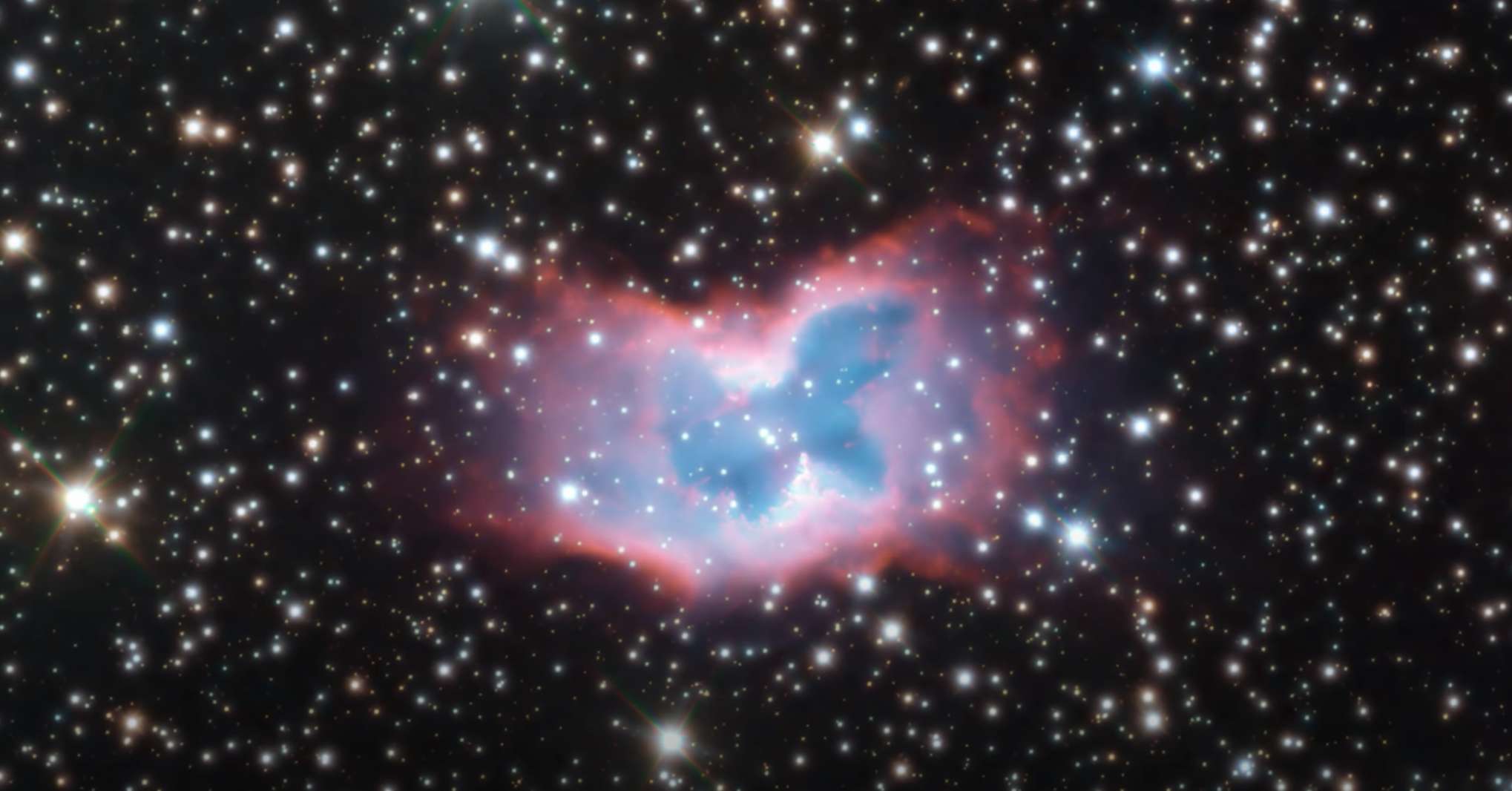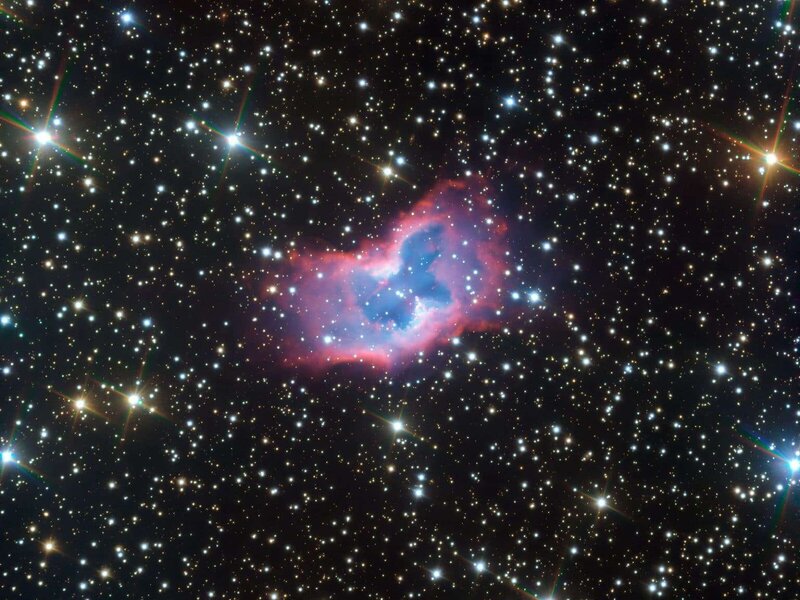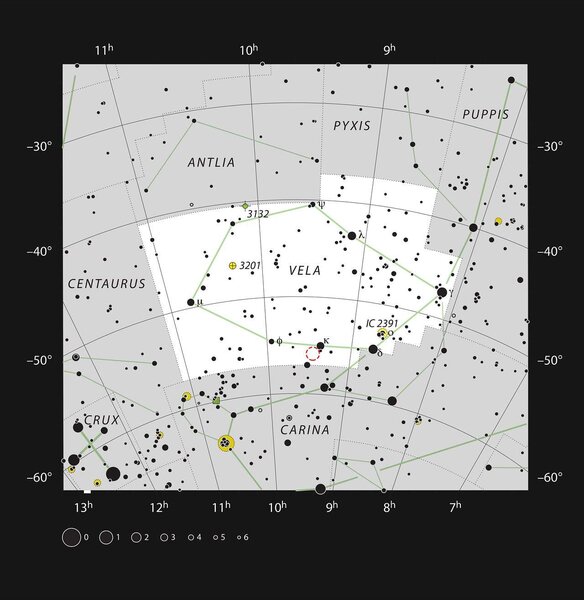Create a free profile to get unlimited access to exclusive videos, sweepstakes, and more!
ESO telescope nets this fluttering cosmic butterfly image in never-seen detail

Appearing like a shimmering symmetrical butterfly fluttering in the deep void of interstellar space, an arresting image of a planetary nebula's gas bubble has just been captured by The European Southern Observatory's (ESO) Very Large Telescope (VLT) in never-seen clarity and detail.
Its complex patterns, shades of pale blue and rose red, glowing borders, and butterfly-like shape make for a glorious cosmic tableau. Known as NGC 2899, this planetary nebula is located between 3000 and 6500 light-years away from Earth in the Southern constellation of Vela (The Sails). Its two central stars are theorized to deliver its hypnotic visual symmetry.
Planetary nebulae are born when ancient stars up to six times the mass of our Sun collapse over enormous swaths of time and eject excessive quantities of gas. Ultraviolet radiation percolating within the nebula makes this gas by-product shine brightly until it's ultimately absorbed and dispersed throughout the universe.
It's a rare occurence which causes this type of phenomenon and the twin-pronged, bipolar signature only occurs in 10–20% of all planetary nebulae.
The ESO's NGC 2899 portrait was created using the FORS instrument on its Very Large Telescope vigilantly spying on the heavens from its outpost in northern Chile. This sensitive 26-foot-long instrument, officially called the FOcal Reducer and low dispersion Spectrograph (FORS), is one of four telescopes that comprise the VLT.
Watch this dramatic video sequence beginning from a wide field of the region of sky surrounding NGC 2899, then zeroing in on the aforementioned planetary nebula.
Despite its scientific name, planetary nebulae actually have nothing to do with planets per se, but are explicitly named for their perishing stars that expel voluminous layers of gas and cosmic material into outer space, often giving off a spherical shape similar to a planet.
Here we're seeing luminous gas expanding some two light-years from its central core, nearly 12 trillion miles, drifting outward as its temperature climbs to ten thousand degrees. These scorching temperatures are the result of intense radiation emanating from the nebula’s parent star, allowing the surrounding halo of hydrogen gas to glow red, with the interior oxygen gas giving off a blue luster.
This nature-loving image comes courtesy of the ESO Cosmic Gems program, which is an educational and exploratory outreach initiative to bring forth artistic images of visually alluring heavenly objects employing ESO's mighty telescopes.
This program allows for spare telescope time that can't be effectively used for science observations. Data gathered can potentially be suitable for scientific endeavors, and are made accessible to astronomers via ESO’s extensive science archive.




























